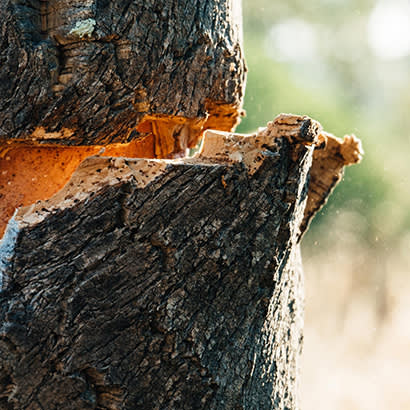
For an enhanced digital experience, read this story in the ezine.
Architects and designers increasingly seek eco-efficient materials and solutions that ensure quality and comfort without harming the environment. Combining eco-efficiency and performance, cork is one such product that has tremendous potential in the fields of urban construction, rehabilitation and outdoor areas.
All over the world, a growing portion of people live in cities. Big or small, old or new, cities are becoming our natural environment. According to the United Nations, about 55 percent of the world’s population currently lives in urban areas, and it is estimated that this percentage will rise to 68 percent over the coming decades. By 2050, two-thirds of the global population is expected to live in urban areas.
Cork and the Green Cities of Tomorrow
We must improve the quality of life in urban centers, both in terms of comfort and environmentally friendly solutions in new buildings, rehabilitations and outdoor spaces. Cork, a renewable, natural raw material that plays an important role in the reduction of greenhouse gases, is gaining momentum in sustainable, eco-efficient construction. This is due to its thermal insulation properties and acoustic and vibration control capacities, along with other circular-economy and
nature-based materials.
Cork is a natural, 100 percent recyclable material obtained from the cork oak tree (Quercus Suber L.). This oak species, whose bark (cork) regenerates itself, has an average lifetime of 200 years and is found mainly in Southern Mediterranean countries and North Africa. Portugal is the leading cork-producing country, responsible for more than 50 percent of total European cork production.
Studies indicate that for each ton of cork produced, the cork oak forest can sequester up to 73 tons of carbon dioxide, and thus helps to reduce the Global Warming Potential. This contributes to the goal of carbon neutrality in cities.
Cork’s Natural Technology
Cork has a honeycomb structure that includes thousands of microscopic cells, filled by an air-like gas that makes cork light with high flexibility and compressibility.
In addition, cork has a series of other characteristics that enables a broad range of applications in building construction. It’s resistant to moisture, friction and abrasion. Cork also boasts thermal, acoustic and vibration insulation capacities.
Safer, More Accessible Playgrounds
Cork can be used as a safe, stable and sustainable surface for outdoor areas, urban parks and playgrounds due to its main characteristics: low surface temperature, impact absorption, odorless, drainage capacity, lightweight and fire retardant. Cork’s resilience creates a cushioning effect, which makes floors comfortable for walking and standing. Beyond comfort, playgrounds made with cork need to be safe. Cork surface systems currently meet European standards for play equipment and surfacing, and several cork surfacing thicknesses have been tested according to ASTM 1292 by TÜV SÜD. What’s more, inclusive cork systems provide full accessibility for those who use wheelchairs or other mobility equipment.
Green space is vital to children’s health and ability to engage in physical activity. Natural playground elements such as cork help create dynamic, sustainable places to play.
Paula Bueno is Marketing Manager at Amorim Cork Composites.

